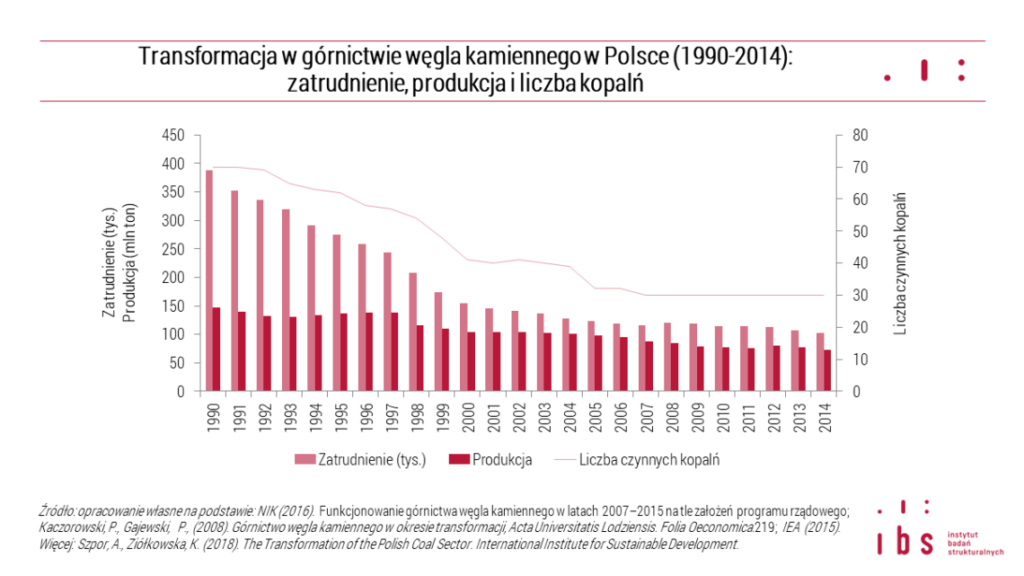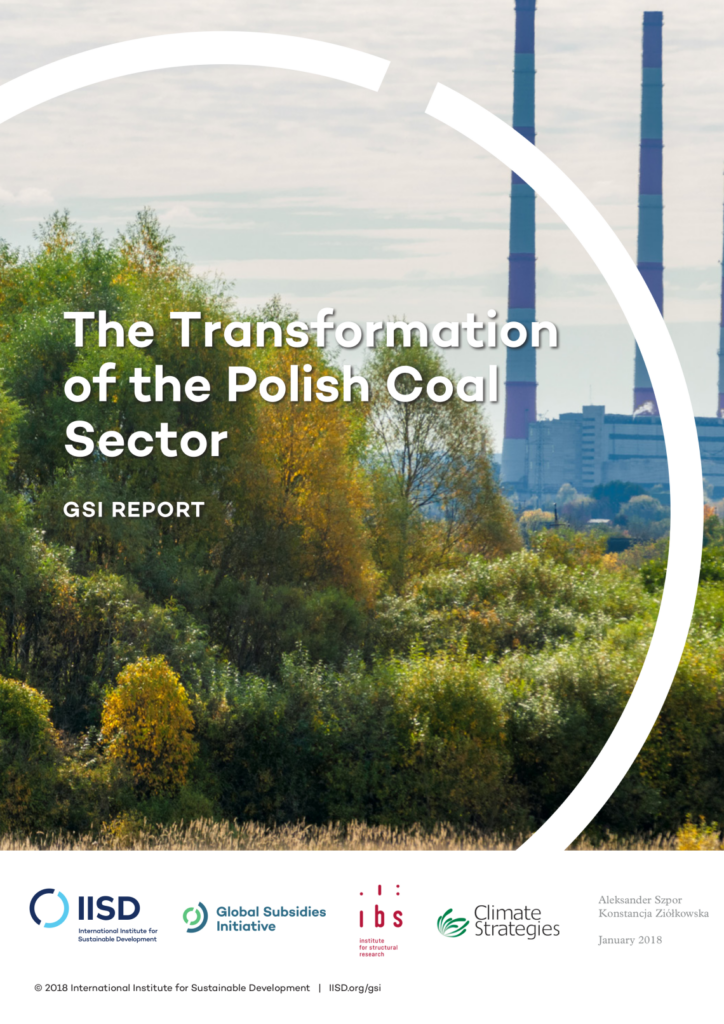The hard coal mining sector continues to be the backbone of the Polish energy system. It safeguards its relative independence, yet at the same time poses an important obstacle for achieving goals of the EU climate and energy policy, particularly the reduction of CO2 emissions. In view of the approaching COP-24 summit, which is due to take place in December 2018 in Katowice – the capital of the main mining region in Poland, this issue is even more pertinent.
Decline in employment, production & number of mines
In the recent report prepared for the International Institute for Sustainable Development (IISD) entitled “The Transformation of the Polish Coal Sector” Aleksander Szpor and Konstancja Ziółkowska from our Institute describe the changes in the Polish coal sector since the 1990s. The main challenge of this process was the adjustment to the free market economy. At a large social cost, its size (production, employment and number of mines) has been reduced and the most depreciated assets have been written off sold. Yet the main goal, economic efficiency is still not achieved.

The report points to a coincidence of several factors which allowed to achieve in the period 1998-2001 the most spectacular results over the course of the entire transformation. Among them the two most important were a broad governing coalition (including trade unions) and the EU accession process strengthening regional policies.
The study considers the policies and strategies that were adopted to help manage the decline in employment. In particular, it focuses on two measures: the Mining Social Package and Special Privileges for Mining Communes. Both instruments, despite their positive aspects, turned out to have significant deficiencies.
In conclusion authors suggest possible improvements for measures used in Poland such as securing:
- the re-skilling component of the main labour restructuring instruments,
- long-term evaluation measures for each of the instruments,
- an viable economic alternative to coal, such as development built on regional comparative advantages (e.g. automotive industry).
Full report is available on the IISD website → see.


